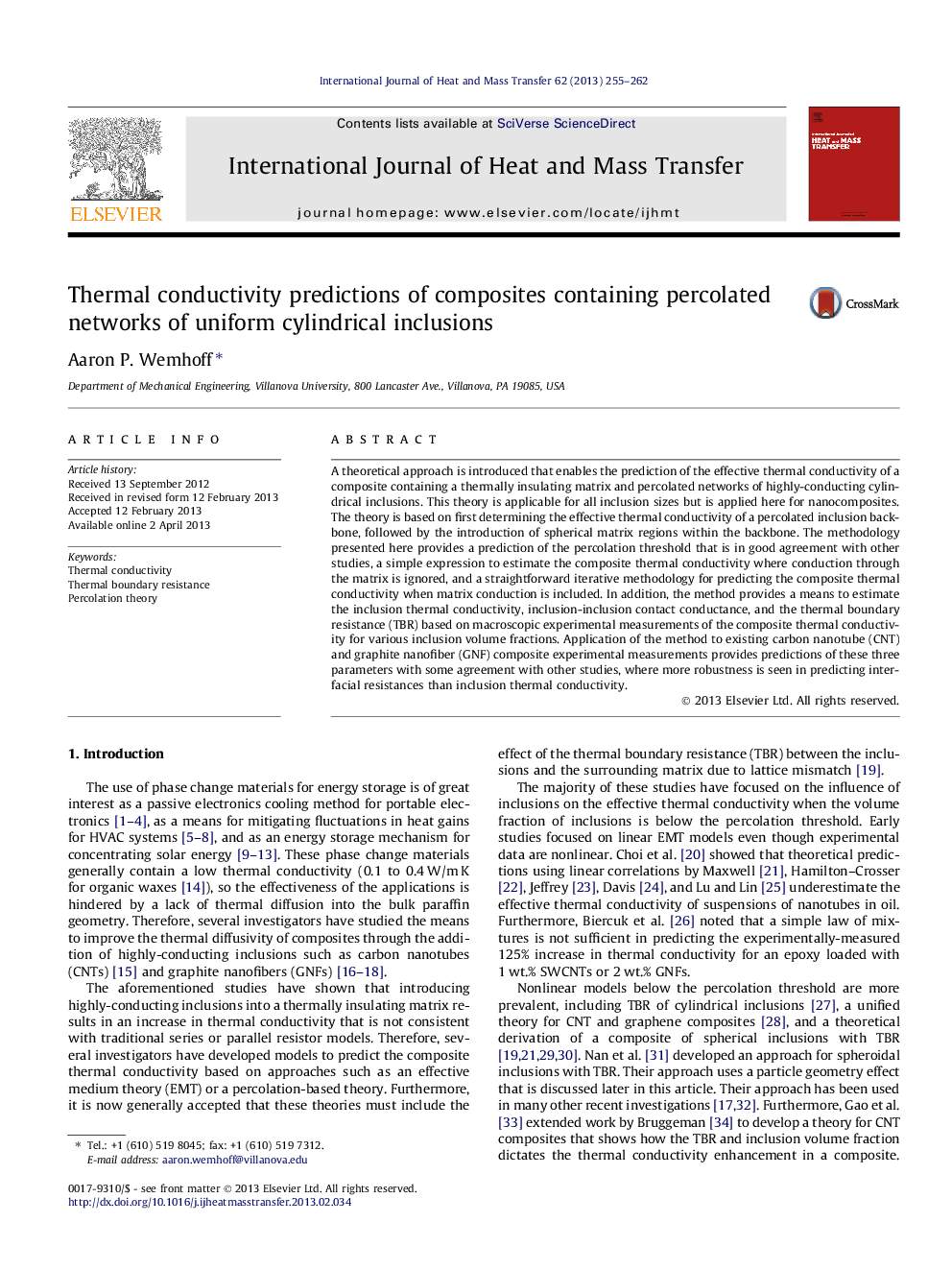| Article ID | Journal | Published Year | Pages | File Type |
|---|---|---|---|---|
| 658211 | International Journal of Heat and Mass Transfer | 2013 | 8 Pages |
A theoretical approach is introduced that enables the prediction of the effective thermal conductivity of a composite containing a thermally insulating matrix and percolated networks of highly-conducting cylindrical inclusions. This theory is applicable for all inclusion sizes but is applied here for nanocomposites. The theory is based on first determining the effective thermal conductivity of a percolated inclusion backbone, followed by the introduction of spherical matrix regions within the backbone. The methodology presented here provides a prediction of the percolation threshold that is in good agreement with other studies, a simple expression to estimate the composite thermal conductivity where conduction through the matrix is ignored, and a straightforward iterative methodology for predicting the composite thermal conductivity when matrix conduction is included. In addition, the method provides a means to estimate the inclusion thermal conductivity, inclusion-inclusion contact conductance, and the thermal boundary resistance (TBR) based on macroscopic experimental measurements of the composite thermal conductivity for various inclusion volume fractions. Application of the method to existing carbon nanotube (CNT) and graphite nanofiber (GNF) composite experimental measurements provides predictions of these three parameters with some agreement with other studies, where more robustness is seen in predicting interfacial resistances than inclusion thermal conductivity.
